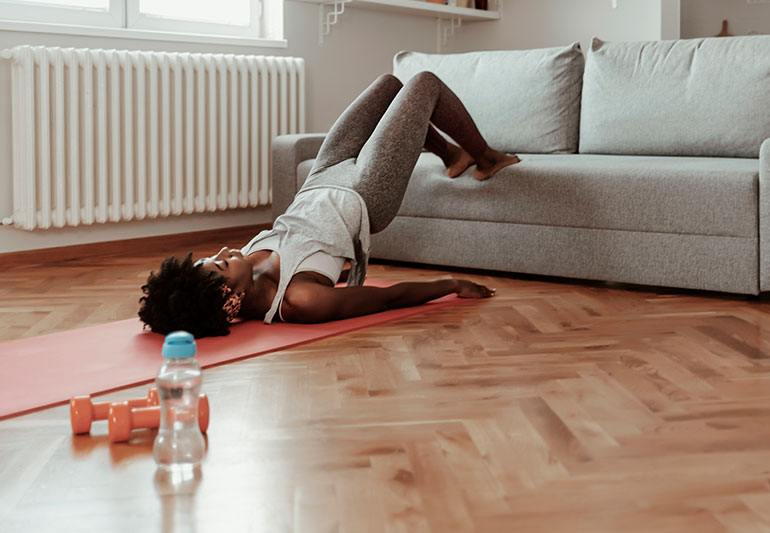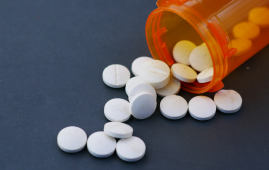

Tens of thousands of athletes visit the emergency room each year because of gymnastics injuries. Sports medicine specialist Marie Schaefer, MD, explains how gymnasts can make the most of their recovery and get back on the mat sooner.
Get care right away
Many hard-core gymnasts try to minimize their injuries or ignore them. But Dr. Schaefer recommends the opposite approach if you want to get back to your sport.
“Treat injuries aggressively and quickly,” says Dr. Schaefer. “Resting or immobilizing an injury with a brace allows it to heal quickly. Don’t try to play through the injury — you’ll just prolong your recovery and delay your return.”
The RICE method — rest, ice, compression and elevation — is a helpful tool to use. “Ice is a strong anti-inflammatory and is important to use after injuries,” says Dr. Schaefer.
Enlist the help of a gymnastics PT
When it’s time to ease back into activity, work with a physical therapist (PT) or athletic trainer specializing in caring for gymnasts. A specialist can help you get back into the sport without aggravating the injury or getting hurt again.
“Early physical therapy is important for gymnasts,” explains Dr. Schaefer. “Your therapist can guide you through exercises that are safe to do as you heal. They can show you how to do modified routines that won’t put weight or strain on your injured body part.”
Get creative with exercise
Find ways to keep up your fitness level while you heal without doing gymnastics. If you have an injured wrist, focus on running, work on core exercises or practice lower-body resistance. If you’ve injured your lower body, concentrate on core exercises and building upper body strength.
A swimming pool can be useful as you recover. Swimming or water aerobics offer resistance and cardio options with less impact on your joints.
Go back gradually
Check in with your PT or trainer as you recover to make sure the injury is healing well. Wait to return to the mats until you get cleared by your doctor or therapist. Even after you go back, expect your routine to look different for a while.
“Return to gymnastics in steps,” says Dr. Schaefer. “Injured gymnasts should start at about 25% of their previous skill level. For example, a level 8 gymnast should begin at a level 2 skill after an injury.”
If you’re performing the lower-level skill without pain, you can take it up a notch the next day. “Only do one new activity per day,” says Dr. Schaefer. “That way, you can see how you feel the next morning. If you have any pain, you’ll know what caused it, and you can address it with your PT or trainer.”
Listen to your body
You might be sore after trying a new activity because you haven’t used those muscles in a while. Don’t ignore pain. Tell your doctor, PT or trainer about it.
“A small amount of soreness might be acceptable, but it depends on the injury,” says Dr. Schaefer. “That’s why you need to talk to your provider and find out whether it’s normal or whether you need to back off.”
Stay connected
Gymnasts may be disappointed or even devastated by an injury that interrupts their sport. It can be tempting to isolate yourself after getting hurt — but don’t go it alone.
“Keep in touch with teammates, friends and coaches as you recover,” says Dr. Schaefer. “They can be a source of encouragement and support. Mental and emotional health are just as important as regaining your physical health.”
Watch for burnout
Finally, ask yourself if the love affair with gymnastics is still there. Maybe the passion and commitment are as strong as ever — or maybe you’re ready to move on.
This question is especially important when it comes to young gymnasts. “Sometimes, young athletes decide they want to try different sports or activities,” says Dr. Schaefer. “Meanwhile, their parents push them to continue because they think it’s best for their child.”
Check with your child regularly to see how they feel. Though it’s hard for parents to let go of something they’ve invested time, money and energy in, it may be the right move.
“I’ve talked to gymnasts who want to do other things, but they don’t want to let their parents down,” says Dr. Schaefer. “Give your child freedom to make choices about their activities and interests. Their passions may change as they grow, but that’s how they find out who they are.”
more recommended stories
 High-Intensity Training and Oxidative Stress Insights
High-Intensity Training and Oxidative Stress InsightsNew Evidence Linking High-Intensity Training and.
 Perinatal Mental Health Challenges Highlighted in New Study
Perinatal Mental Health Challenges Highlighted in New StudyMental Health Challenges in New Parents:.
 World Summit Outlines Core Principles for Healthy Longevity
World Summit Outlines Core Principles for Healthy LongevityWhy Healthy Longevity Demands a New.
 Cholesterol-Lowering Drugs May Help Reduce PFAS Levels
Cholesterol-Lowering Drugs May Help Reduce PFAS LevelsPer- and polyfluoroalkyl substances (PFAS) continue.
 AI ECG Model Outperforms Standard STEMI Triage
AI ECG Model Outperforms Standard STEMI TriageNovel AI ECG Model Outperforms Standard.
 WHO and EU Strengthen Digital Health in Africa
WHO and EU Strengthen Digital Health in AfricaThe World Health Organization (WHO) and.
 Quitting Smoking Slows Memory Decline, Study Finds
Quitting Smoking Slows Memory Decline, Study FindsQuitting smoking is linked to slower.
 Breakfast Skipping Linked to Metabolic Syndrome
Breakfast Skipping Linked to Metabolic SyndromeBreakfast Skippers May Face Metabolic Consequences.
 Cancer Cells Learn to Self-Report: A New Frontier in Immunotherapy
Cancer Cells Learn to Self-Report: A New Frontier in ImmunotherapyHow a Drug Complex Enables Immune.
 Machine Learning Predicts Early Mortality in IBD Patients
Machine Learning Predicts Early Mortality in IBD PatientsA groundbreaking study published in the.

Leave a Comment